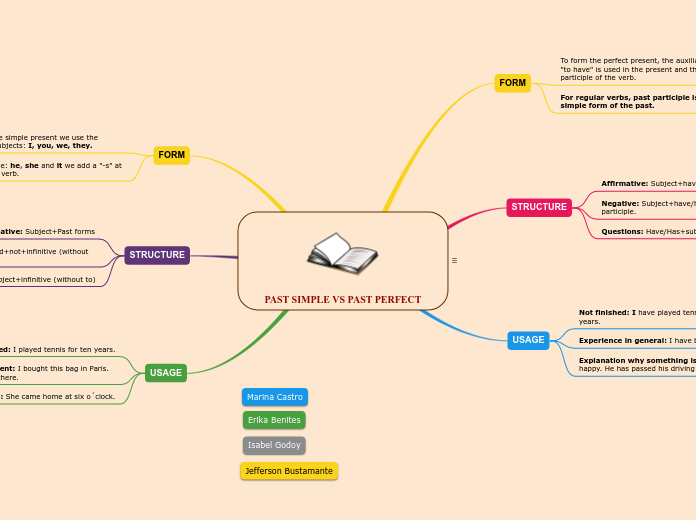
PAST SIMPLE VS PAST PERFECT
FORM
To form the perfect present, the auxiliary verb "to have" is used in the present and the past participle of the verb.
For regular verbs, past participle is the simple form of the past.
STRUCTURE
Affirmative: Subject+have/has+past participle.
Negative: Subject+have/has+not+past participle.
Questions: Have/Has+subject+past participle..?
USAGE
Not finished: I have played tennis for ten years.
Experience in general: I have been to Paris.
Explanation why something is now: Peter is happy. He has passed his driving test.
FORM
To combine the simple present we use the infinitive for subjects: I, you, we, they.
For third people: he, she and it we add a "-s" at the end of the verb.
STRUCTURE
Affirmative: Subject+Past forms
Negative: Subject+did+not+infinitive (without to)
Questions: Did+subject+infinitive (without to)
USAGE
Finished: I played tennis for ten years.
One specific event: I bought this bag in Paris. It´s very cheap there.
Time is given: She came home at six o´clock.
